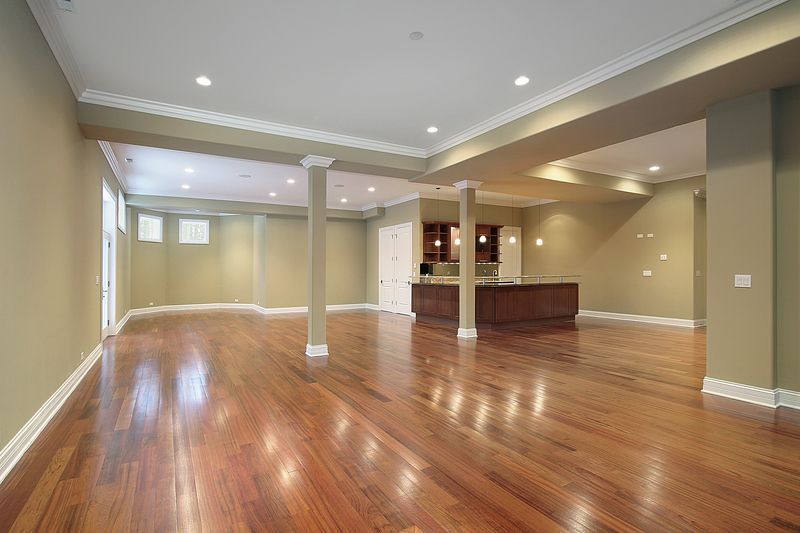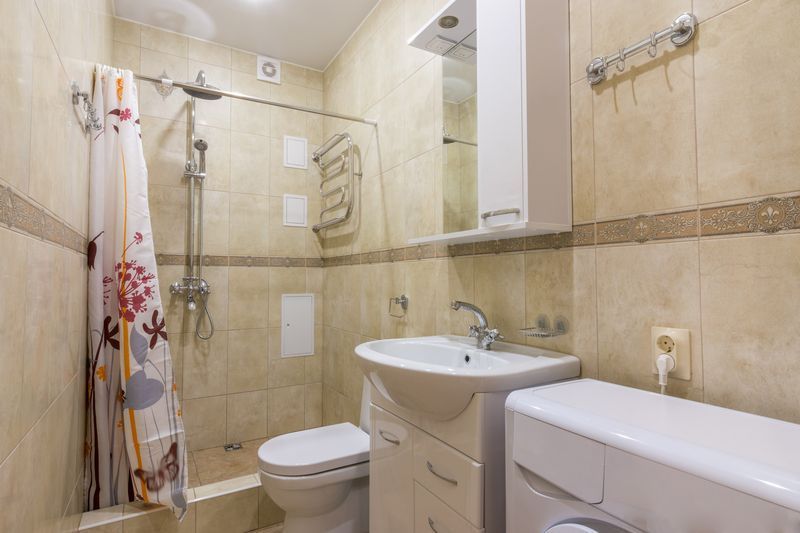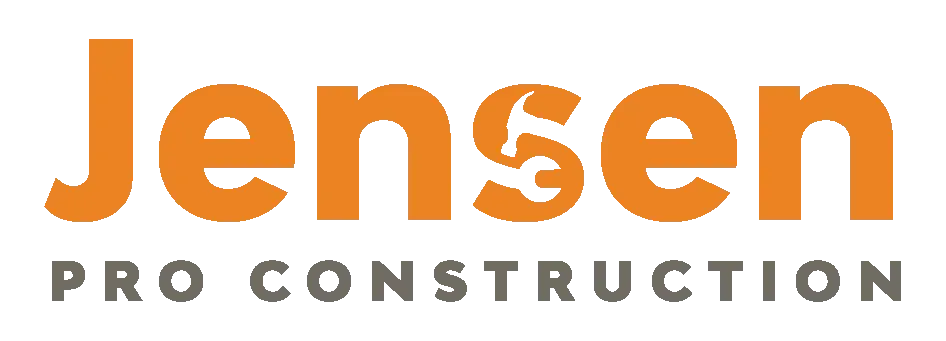
Get in touch
435-216-0210
parker@jensenproconstruction.com
Maximizing Basement Space: A Guide to Creating Rental Income
May 15, 2024
Legal Considerations and Compliance
Before initiating the transformation of a basement into a rental space, homeowners must navigate the legal framework. Zoning laws, building codes, and permit requirements vary widely by location and dictate what can be legally done with the space. Egress windows or doors, ceiling height, and fire safety measures are common regulations that must be met. Additionally, homeowners should inquire about whether a separate address or utility meters are needed and whether local laws permit renting out basement spaces.
Designing for Functionality and Privacy
An effective rental space must offer both functionality and privacy. Proper planning ensures tenants enjoy a self-contained living environment. Incorporating soundproofing materials into walls and ceilings can greatly enhance the appeal of a basement apartment, giving tenants a sense of separation from the main residence. Thoughtful layout design, including the placement of kitchens and bathrooms, can maximize space while ensuring a comfortable living experience.
Incorporating Essential Amenities
Providing essential amenities is vital to making a basement space livable and inviting. Key features typically include a full kitchen, bathroom, and in some cases, laundry facilities. Quality fixtures and appliances can make a big difference to potential renters. Well-designed storage solutions are also important in a basement space, helping tenants organize their belongings and maintain a clutter-free environment.
Balancing Aesthetics with Durability
In the realm of rental properties, the balance between aesthetic appeal and durability is crucial. Materials and finishes need to withstand the wear and tear of tenant use while still creating an inviting atmosphere. Durable flooring options, such as laminate or tile, are sensible choices for high-traffic areas. Walls should be finished with washable paints or other resilient materials to minimize maintenance and refurbishment between tenants.
Ensuring Adequate Lighting
Basements often suffer from a lack of natural light, making it necessary to incorporate ample lighting solutions to create a warm and welcoming space. Recessed lighting, wall sconces, and strategically placed lamps can all enhance the brightness of a basement apartment. Where possible, maximizing natural light through egress windows not only improves the ambiance but also ensures safety compliance.
Creating an Independent Entrance
If feasible, providing a separate entrance to the basement unit is a significant draw for renters, affording them independence and privacy. It requires careful planning and adherence to building regulations but can substantially elevate the rental value and desirability of the space.
Soundproofing and Insulation
Soundproofing is a critical aspect of creating a peaceful environment for tenants and preserving the homeowners' privacy. Using insulation between floor joists and installing sound-dampening drywall are effective ways to reduce noise transfer. Properly insulating the space also contributes to energy efficiency and comfort, helping to control the temperature and reduce utility bills.
Addressing Moisture and Ventilation
Basements are prone to moisture issues, which can lead to mold and mildew. Waterproofing the walls, installing a dehumidifier, and ensuring proper drainage can mitigate these risks. Adequate ventilation is also essential for air quality and can be achieved through an HVAC system or by installing ventilation fans.
Furnishing for a Move-In Ready Space
Offering the rental unit furnished can attract a broader range of tenants, including those looking for short-term accommodations or who prefer not to transport large items. Furnishings should be tasteful, versatile, and durable to cater to various tastes and minimize the need for replacements.
Transforming a basement into a rental property is a strategic way for homeowners to capitalize on unused space. Through careful planning and adherence to legal requirements, a basement can be converted into a comfortable and attractive living area that generates steady rental income.
Attention to details such as privacy, soundproofing, and the inclusion of essential amenities will make the space more appealing to potential renters. The integration of durable yet aesthetically pleasing finishes will ensure the space remains attractive over time. By undertaking this project, homeowners not only benefit from an additional income stream but also add considerable value to their property, making it a sound investment for the future.
Ready to transform your basement into an income-generating apartment but not sure where to start? Let us help you maximize your property's potential. Contact us today
to get started.
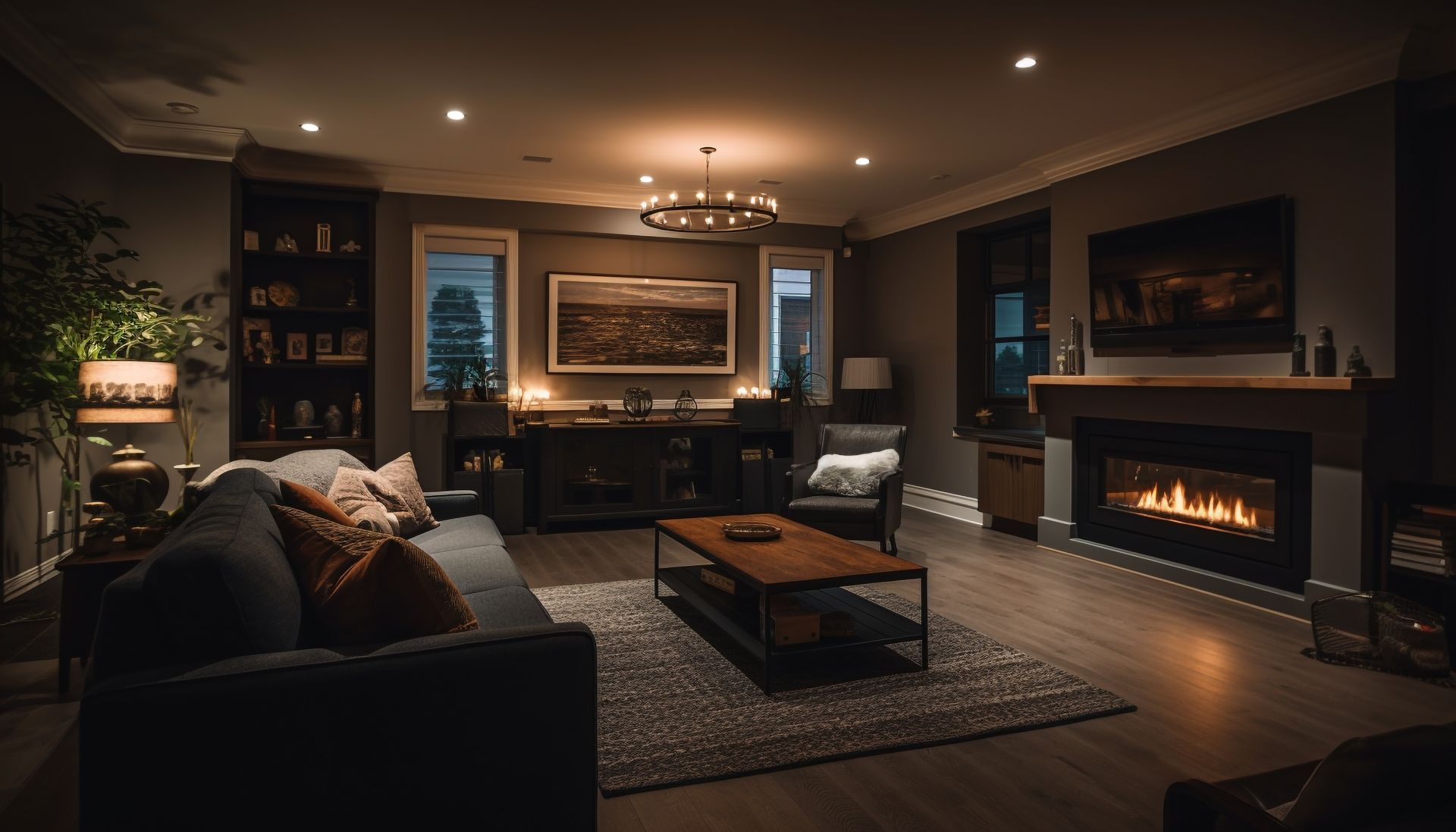
January 1, 2025
Basements are no longer dark, underutilized spaces in homes. In 2025, they are evolving into modern, functional living areas that reflect cutting-edge design and advanced functionality. Here are the top ten basement renovation trends that homeowners should consider for their upcoming projects. Innovative Lighting Solutions One of the key trends in basement renovations is the use of innovative lighting solutions. Modern LED systems, ambient lighting, and automated controls can transform the basement's ambiance and functionality, creating a space that is both inviting and practical. Flooring That Combines Style and Durability New flooring options are being developed specifically for moisture-prone basement environments. Engineered materials that marry design with practicality are gaining popularity, offering homeowners a combination of style and durability for their basement floors. Eco-Friendly Materials and Sustainable Practices The use of recycled, low-VOC, and renewable building materials is another trend in basement renovations. By incorporating eco-friendly materials and sustainable practices, homeowners can not only benefit the environment but also achieve long-term energy savings in their homes. Multi-Purpose Spaces for Modern Lifestyles Creating versatile areas in the basement that can serve as home gyms, offices, or entertainment zones is a growing trend. By designing multi-purpose spaces, homeowners can make the most of their basement square footage and adapt to their evolving lifestyle needs. Moisture Management and Waterproofing Technologies Preventing dampness, mold, and water intrusion is essential in basement renovations. The latest moisture management and waterproofing technologies are being used to maintain a dry, healthy environment in basements, ensuring the longevity of the renovation. Enhanced Egress and Safety Code Innovations Updated egress windows and compliance with modern safety codes are crucial in basement renovations. Innovations in fire safety and escape routes are maximizing basement usability without compromising safety, providing homeowners with peace of mind. Acoustic and Soundproofing Advancements For homeowners looking to create home theaters or quiet workspaces in their basements, new sound insulation materials and design techniques are essential. Achieving superior sound control in multi-use areas is possible with the latest acoustic and soundproofing advancements. Smart Home Integration Tailored for Basements Adapting climate control, security systems, and automated lighting for below-grade environments is a growing trend. Integrating smart home technology in basements can enhance convenience and energy efficiency, providing homeowners with a modern and connected living space. Innovative Storage and Space-Optimization Solutions Maximizing limited space in basements with innovative storage and space-optimization solutions is a key trend. Built-in storage, hidden cabinetry, and clever design concepts can help homeowners stay organized without compromising the aesthetics of their basement. Cost Management, Financing, and ROI Strategies Budgeting essentials and insights into the latest financing options for basement renovations are crucial for homeowners. Analyzing trends that offer the best long-term value and increased home equity can help homeowners make informed decisions about their renovation projects. In conclusion, these top ten basement renovation trends for 2025 are reshaping how homeowners approach basement renovations. By incorporating innovative design, advanced technology, and sustainable practices, homeowners can transform their basements into modern, functional living spaces. For personalized consultations and expert advice on basement renovations, contact Jensen Pro Construction today. Explore more renovation ideas and success stories on Jensen Pro Construction's blog .

December 30, 2024
In recent years, smart home technology has gained significant traction, becoming a popular choice in home renovations. This trend reflects a growing desire for increased convenience, energy efficiency, and enhanced living experiences. Homeowners are integrating smart devices to automate daily tasks, reduce energy consumption, and improve their overall quality of life. According to a 2022 report by Statista , the global smart home market was projected to reach over $53 billion, illustrating the significant growth and widespread adoption of these technologies at that time. This figure serves as a testament to the market's strength and its continued expansion in the years since. To explore this growth further, delve into specific smart home technologies that are transforming modern renovations, highlighting their benefits and practical applications for homeowners. Smart Thermostats: Enhancing Comfort and Efficiency Smart thermostats are a prime example of technology that can both improve comfort and reduce energy costs. These devices learn user habits to optimize heating and cooling schedules, ensuring a comfortable home environment while minimizing energy usage. Popular brands like Nest, Ecobee, and Honeywell offer features such as remote access via smartphone apps, integration with other smart home systems, and energy usage reports. By adjusting temperature settings based on occupancy and preferences, smart thermostats can lead to significant savings on energy bills, potentially reducing heating and cooling costs by up to 10–15% . Additionally, homes equipped with smart thermostats often see an increase in resale value due to their appeal to tech-savvy buyers. Intelligent Lighting Solutions for Modern Homes Smart lighting systems, including bulbs, switches, and dimmers, offer homeowners the ability to customize lighting to suit their needs and preferences. These systems can be controlled through smartphone apps or voice commands, providing convenience and flexibility. Smart lighting not only enhances energy efficiency by allowing precise control over light usage but also enables users to create specific ambiances for different occasions. Innovative products like Philips Hue and LIFX offer a wide range of options, from color-changing bulbs to automated lighting schedules, making it easier than ever to transform a home's lighting landscape. Upgrading Home Security With Smart Systems Smart security systems are transforming the way homeowners protect their properties. Components such as cameras, doorbells, and alarms offer real-time alerts and remote monitoring, providing peace of mind and enhanced safety. These systems allow users to monitor their homes from anywhere, ensuring that they are always aware of any potential security threats. In Utah, homeowners should be mindful of local regulations regarding security camera installations, ensuring compliance while benefiting from increased security measures. The Role of Smart Appliances in Modern Kitchens The integration of smart appliances in kitchen renovations is revolutionizing the way people cook and manage their households. Smart refrigerators, ovens, and dishwashers offer features like energy efficiency, remote operation, and personalized settings. For example, a smart oven can be preheated from a smartphone, while a smart refrigerator can provide inventory updates and suggest recipes based on available ingredients. These appliances streamline daily tasks, making kitchen management more convenient. However, homeowners should consider potential challenges such as compatibility with existing systems and the initial investment cost when upgrading to smart appliances. Incorporating Smart Entertainment Systems Smart entertainment systems, including smart TVs and speakers, offer seamless streaming and voice control, enhancing the home entertainment experience. A strong Wi-Fi network is crucial to support these devices, ensuring uninterrupted streaming and connectivity. Integrating smart entertainment systems into existing home setups can be straightforward, with options to connect devices wirelessly or through home automation platforms. Brands like Samsung, LG, and Sonos provide a range of products that cater to diverse entertainment needs, allowing homeowners to enjoy a personalized and immersive experience. The Impact of Smart Technology on Home Resale Value Smart home technology can significantly enhance a property's appeal to potential buyers. Features such as smart thermostats, security systems, and lighting solutions are particularly attractive in the real estate market. According to a report by Zillow , homes with smart features tend to sell faster and at higher prices compared to those without. This increased demand for smart-enabled homes underscores the importance of incorporating technology into modern renovations. Practical Considerations and Challenges in Smart Renovations While the benefits of smart home technology are clear, homeowners may face challenges when integrating these systems. Compatibility issues, installation costs, and the complexity of managing multiple devices can be daunting. It's important to plan thoroughly and consult with professionals to ensure a seamless integration process. Homeowners in Utah can access local resources and experts to assist with smart home renovations, ensuring they choose the right technology based on individual needs and budget constraints. Smart home technology continues to evolve, offering innovative solutions for modern living. By understanding the various options and potential challenges, homeowners can make informed decisions that enhance their homes and improve their quality of life. Smart home technology is transforming modern renovations, offering homeowners enhanced convenience, efficiency, and security. Jensen Pro Construction, with expertise in home renovations, can play a vital role in helping clients seamlessly incorporate these innovative features. Ready to bring smart technology into your home renovation? Contact Jensen Pro Construction today for a consultation and take the first step towards a smarter, more connected home.

December 15, 2024
The open floor plan concept has redefined modern architecture, offering innovative solutions for both residential and commercial spaces. This design approach minimizes the separation between living areas, promoting a more communal and adaptable environment. Over the years, it has gained popularity due to its ability to cater to contemporary lifestyles that value connectivity and flexibility.

November 15, 2024
Home renovations and upgrades are exciting yet challenging endeavors that require careful planning and execution. At the center of a successful renovation is the selection of the right contractor. This choice can dramatically influence the project's outcome, affecting both the quality and the timeline. A competent and reliable contractor can turn your vision into a reality, ensuring that every aspect of the project aligns with your expectations. Conversely, an inexperienced or unreliable contractor can lead to delays, budget overruns, and substandard workmanship, jeopardizing both your investment and peace of mind.

September 15, 2024
Home renovation can transform your living space, increasing both functionality and market value. However, without proper planning and execution, the process can become overwhelming. This guide will walk homeowners through the typical stages of a home renovation project, highlighting key considerations such as establishing a clear project scope, setting realistic timelines, and ensuring effective communication with your contractor for a smooth renovation journey.
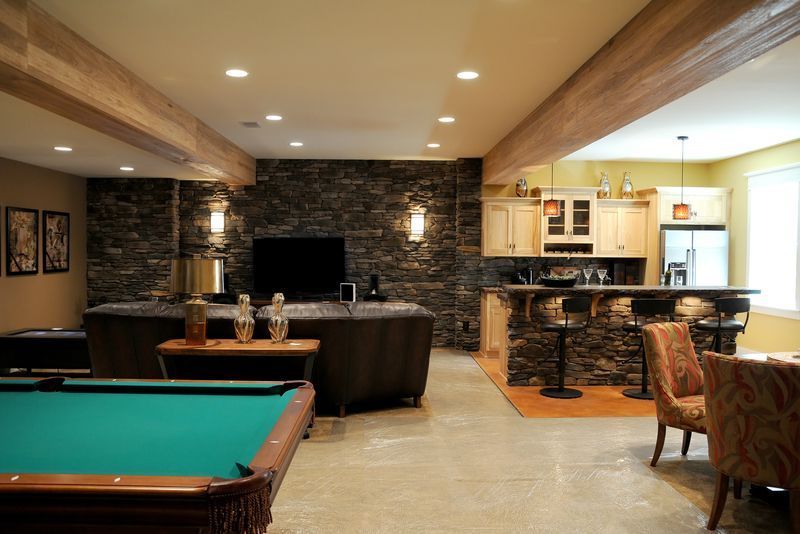
August 15, 2024
Transforming a basement into a multi-functional space is a trend that has gained momentum among homeowners looking to enhance the usability and value of their homes. Integrating a kitchenette into your basement design not only adds convenience but also increases its appeal as an entertainment hub. This guide will explore how to select compact appliances, incorporate functional storage, and devise creative layout plans to craft a practical yet stylish kitchenette tailored to complement the overall aesthetic of your basement.
Quick Links
Connect with us
Phone: 435-216-0210


